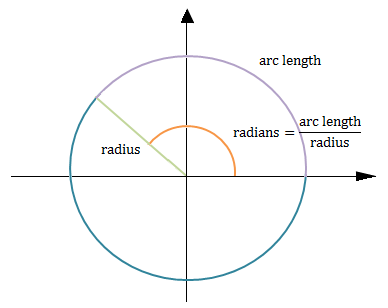Overview
Although many students are most familiar with the measurement of angles by degrees, there are other ways to measure angles. In calculus, advanced trigonometry, and applications of calculus to science, angles are measured in radians. The grad is a unit of angle measure used in surveying and as part of the metric system, and minutes and seconds of arc are used to measure angles for navigation and in astronomy.
Degrees
Many people are familiar with measuring an angle by degrees, using a protractor. One degree is 1/360 of a circle, as a circle has 360 degrees. Angles that are less than 90o are acute, angles that are 90o are right angles, and angles that are more than 90o are obtuse. The measurement of a full circle as 360o stems from the Babylonians, who used multiples of 60 in their mathematical system.
Radians
Radians are less familiar. They measure the length of an arc divided by its radius. They are part of the SI system and used in many scientific applications, as well in mathematics. One radian is equal to 180/π degrees, so to convert degrees to radians, multiply the degree measure by π/180. To convert radians to degrees, multiply the radian measure by 180/π degrees. For example, 1 radian multiplied by 180/π equals about 57.296o. A 23o angle is about 0.401 rad.
Grads
Grads, short for gradian, are closely related to radians. A full turn or 2π is equal to 400 grads. It is an alternative measure of angles used in France and some other European countries, and it is used by surveyors. A 45o angle is 50 grads, a 90o angle is 100 grads, a 135oangle is 150 grads, and a straight line is 180o or 200 grads. In France, a common angle measure is the centigrad, or 1/100 of a grad. That term is so similar to the term for centigrade scale to measure temperature that the name of the temperature scale was changed to Celsius to honor its developer and avoid confusion.
Arc Minutes
An arc minute is equal to 1/60th of one degree, and an arc second is equal to 1/60th of an arc minute. It is used in applications that involve very small angles, such as astronomy, optics, ophthalmology, optometry, and navigation.
Interested in trigonometry tutoring services? Learn more about how we are assisting thousands of students each academic year.
SchoolTutoring Academy is the premier educational services company for K-12 and college students. We offer tutoring programs for students in K-12, AP classes, and college. To learn more about how we help parents and students in Lebanon, NH: visit: Tutoring in Lebanon, NH




